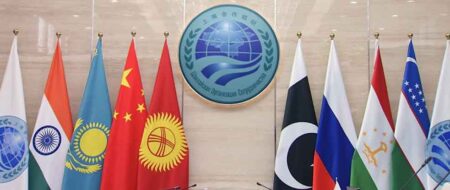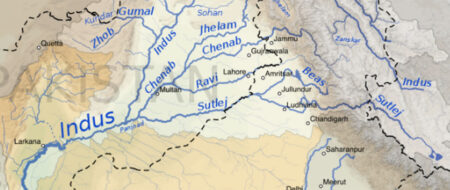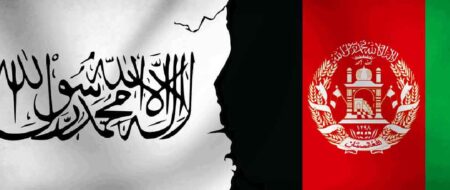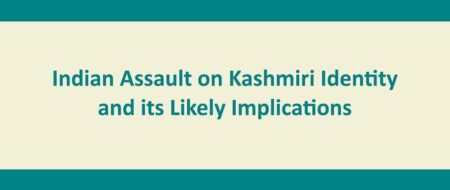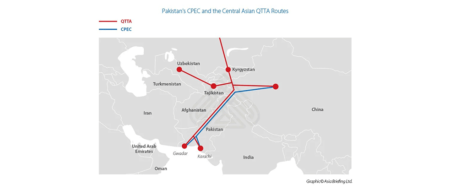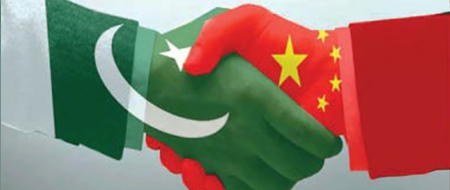Hu Juan
A Chinese scholar analyses the new approach of America to the war it seems to be losing in Afghanistan
Hu Juan*
Introduction
Pakistan has always been important for the political, social and economic life in Afghanistan. Pakistan has complicated ties with the Taliban in Afghanistan. In 1997, Pakistan took the lead among the international community to recognize the Taliban as the legitimate government of Afghanistan and provided them with financial and technical support and assistance. At that time, there were many Pakistani fighters alongside the Taliban resulting in diplomatic isolation by Western and neighboring countries. Pakistan also suffered economically because of the smuggling on its western border. United Nations passed two sanctions against the Taliban, which intensified international pressure on Pakistan. After the 9/11 incident, the Pakistan government abandoned the policy of defending Taliban and supported the US against Taliban. Becoming a frontline ally of the US in its war against terror, Pakistan put an end to the 7 yeas of cooperation with the Taliban.
After eight years of United States-led war in Afghanistan the security situation in Afghanistan has deteriorated even further. The exacerbating situation urged the new US President Obama to review the Bush administration’s strategy in Afghanistan. By the end of March 2009, the United States introduced a new strategy in Afghanistan, thereby making important adjustments in the US war on terror: the focus of anti-terrorism will be transferred from Iraq to Afghanistan and Pakistan. One significant feature of the new strategy is that Pakistan became the key focus. The US president said, “Afghanistan’s future will inevitably be linked with its neighbor Pakistan.” Under the new strategy, the United States would demand the urgent assistance from Pakistan. The new strategy proposed to launch a trilateral dialogue between the U S, Pakistan and Afghanistan so as to strengthen intelligence sharing and military cooperation in North-West Frontier region of Pakistan, and to focus on issues of the three countries’ common concern, such as trade, energy and economic development. The new strategy, it is claimed, would endeavor to bring Pakistan and Afghanistan closer. Early in May 2009 in Washington, Afghanistan and Pakistan signed a memorandum of understanding, and the agreement for transit trade between the two countries will be extended by the end of 2009 that was expected to clear the obstacles for transit trade and enhance economic and trade relations between the two countries.
Hitches in ‘Af-Pak’ Strategy
The US coined the term ‘Af-Pak’ to refer to Obama administration’s strategic focus.[1] Will the relationship between Pakistan and Afghanistan follow the concept of the new US strategy? Can Pakistan play the role that the United States expected from it?
Overwhelming Burden of Anti-Terrorism Campaign
In the backdrop of continuous deterioration of the security situation in Afghanistan and volatile situation in Pakistan, the ‘Af-Pak’ strategy expands the focus of the war against the Taliban and Al-Qaeda from Afghanistan to Pakistan. According to this strategy, Pakistan’s tribal belt is the stronghold for Al-Qaeda from where it plans attacks inside Afghanistan. And since the control of Pakistan government over Federally Administered Tribal Area (FATA) is weak, Obama administration vowed to “disrupt, dismantle and defeat Al-Qaeda” even there. Due to historical, religious, ethnic and cultural ties among tribal communities along Pak-Afghan border, militant groups have developed roots in the region that is considered as ‘safe haven’ by the United States.
On March 27, Pakistan’s President Asif Ali Zardari issued a statement that welcomed the new strategy. However, Islamabad is facing its own pressure in the fight against terrorism. On the one hand, frequent terrorist attacks inside Pakistan are deteriorating internal security situation resulting in a rapid outflow of international and domestic investment from the country that effect the already weak economy quite badly. On the other hand, the United States has accelerated the drone attacks causing a large number of civilian casualties that surged the anti-US sentiment in the country at public and political level. At the same time, there is a large number of Afghan refugees in Pakistan which is causing a huge burden on its economy and also resulting into administrative and social problems.
Centrifugal force: Divergence of US’s and Pakistan’s Objectives
The second reason that makes it difficult for Pakistan to play the role that United States expecte is divergence of objectives of the two countries. The US objective is to protect its security interests in the name of combating terrorism while Pakistan’s interest is to secure a favorable environment in its immediate neighborhood. After the Mumbai attacks in particular, Indo-Pak relations suddenly became tense. However, the current situation turns out to be ‘between the devil and the deep sea’ for Pakistan. In addition, there is also difference in understanding the problem of the Taliban between the US and Pakistan. Islamabad considers the Taliban along Pak-Afghan border and the Taliban in Swat valley as two different elements thus it treated the Taliban in Swat high handedly. Pakistan believes that this is an internal matter of Pakistan. Therefore, different objectives of the US and Pakistan will inevitably lead to the emergence of centrifugal force.
Lack of Mutual Trust
The lack of mutual trust between Pakistan and Afghanistan is also a factor that hinders Pakistan to play the role expected by the US new strategy. Both Afghan President Hamid Karzai and Pakistan Prime Minister Yousaf Raza Gilani commented that the two countries would strengthen cooperation against terrorism in the future when they attend the third meeting of Regional Economic Cooperation in Islamabad. President Obama also held a tripartite meeting on terrorism with the presidents of Afghanistan and Pakistan in Washington. However, due to the long-standing history of mutual distrust, anti-terrorism cooperation between the two sides will face a great test. The US dominant tripartite cooperation is not expected to strengthen the US-Pakistan-Afghanistan tripartite arrangement.
Territorial issue
Pakistan and Afghanistan have acute and historical territorial issues such as Durand Line which can not be resolved by an “anti-Taliban” war simply. In order to achieve the objectives of its new strategy in Afghanistan and Pakistan, the US would have to make an effort in developing better Pak-Afghan bilateral relations. However, these issues have always made it hard for the two countries to develop cordial relations despite the religio-ethnic ties of the two peoples. The cooperation between the two countries that is needed in the fight against terrorism cannot be achieved without solving such problems which would be too big a challenge to be evaded by the ‘Af-Pak’ strategy.
The United States: Fight to Leave, or Fight to Stay?
The “Af-pak” strategy has been devised to make every effort in the hope that Pakistan and Afghanistan would be able to cooperate with the US in its fight against terrorism. This also means that the war in Afghanistan has been expanded to Pakistan. It is clear that the most important for the Obama administration is to adjust its strategic focus amidst the grim security situation in Afghanistan. However, is there any geo-political consideration, besides anti-terrorism?
Geographically, Afghanistan is located between Central Asia, West Asia, South Asia and East Asia, so it is called “the crossroads of Central Asia”. Afghanistan plays a key role in the security paradigm of its adjacent countries, particularly Pakistan, Iran, and the five Central Asian Republics while it can also affect China, Russia, India and other countries. Because of its important geopolitical value, the Persian and the British Empires, the former Soviet Union and now the United States have been and is fighting to capture this region at all costs. Today, we can not simply believe the USA is fighting only the terrorist forces in Afghanistan.
Conclusion
In 2001, the United States spent less than two months to overthrow the Taliban regime in Afghanistan. However after eight years, the Taliban have never disappeared. The Taliban along Pak-Afghan border seemed to have gone through the most difficult times. The New strategy of the US takes the border region as the core of anti-terrorism in South Asian region. For Pakistan, the expansion of Taliban in its territory is an unprecedented threat. However, after the eight-year experience, the Taliban have also been exploring a deal with a comprehensive tactical combat. The US may not be able to achieve the desired objectives. The Pak-Afghan relations and the future of Pakistan in the US-led war on terror under the new strategy are faced with many challenges. How to achieve “Pak-Afghan joint anti-terrorism” is to be tested. No matter whether the Obama Government has geo-political purposes or not, the new strategy will bring about its inevitable geo-political consequences. How to coordinate the interests and concerns from neighboring countries would surely be an uphill task for the US administration in the near future.
* Research fellow, Institute For South Asia Studies, Yunnan Academy of Social Science
[1] Da Wei, the real intention of the Obama Government ,Global, Issue 9, 2009.



